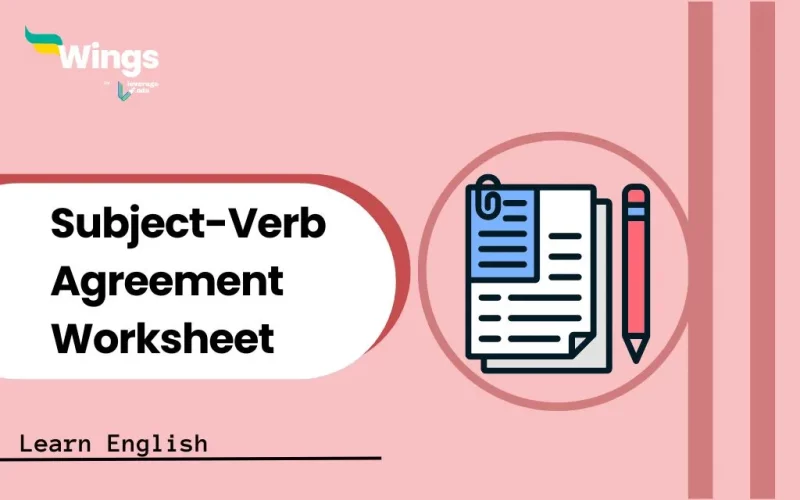Subject-verb agreement is a fundamental rule in English grammar that dictates that the subject and verb of a sentence must agree in number. Mastering this concept is essential for clear and effective communication. If you are struggling to keep your subjects and verbs in harmony, you’re not alone! This blog post will guide you through the basics of subject-verb agreement with helpful tips and exercises. Let’s conquer this grammar challenge together with subject verb agreement worksheet.
This Blog Includes:
Find all Learn English blogs from scratch here!
Subject Verb Agreement Worksheet (PDF)
To help you check your understanding of the subject-verb agreement, we have compiled this worksheet. You can also cross-check yourself with the help of the answers mentioned at the end of the quiz.
Subject Verb Agreement Cheatsheet
Subject Verb Agreement Exercise With Answers
If you are looking for more exercise on subject-verb agreement, then we have got you. Below is another quiz which will help you test your knowledge and also check your answers in the end.
Instructions:
Choose the correct verb form to agree with the subject in each sentence.
- The boy and his friends (is/are) playing basketball.
- Neither the teacher nor the students (was/were) present.
- The committee (has/have) decided on the new rules.
- Everyone in the class (is/are) expected to participate.
- The number of students (is/are) increasing every year.
- Neither of the twins (like/likes) to share their toys.
- The police (is/are) investigating the crime.
- Mathematics (is/are) my favourite subject.
- The crowd (was/were) going wild with excitement.
- The box of chocolates (is/are) on the table.
Check Answers!
- are
- was
- has
- is
- is
- likes
- are
- is
- was
- Is
What is a Subject Verb Agreement?
Subject-verb agreement or subject-verb concord is where the sentence’s subject and verb in tense, aspect and mood (abbreviated as TAM) which translates to number, person, and gender is matched. In simple words, it is where both the subject and the verb must be singular or plural.
Here are some of the basic rules on the subject-verb agreement which you must remember:
Singular subject + singular verb
- Example: She writes every day.
Plural subject + plural verb
- Example: They write every day.
While the rule is simple there are always some exceptions which you must know.
Make sure you check out this blog to find out more rules on Subject Verb Agreement
Explore other topics on English Grammar here:
FAQs
In subject-verb agreement, verbs must agree with subjects in number and in person.
Example: The dog drinks his water every day. Here, “Dog” is a singular subject; “drinks” is a singular present tense verb.
To ensure this, the verb of a sentence must agree with the subject of the sentence in number and person.
The other name for subject-verb agreement is “concord: which refers to the way that a word has a form appropriate to the number or gender of the noun or pronoun it relates to.
There are several common mistakes that people make when it comes to subject-verb agreement:
1. Intervening Phrases: Sometimes, phrases come between the subject and the verb, which can confuse people. The verb should still agree with the main subject.
2. Collective Nouns: Collective nouns (like team, group, family) can be singular or plural depending on the context.
3. Subjects Joined by “And”: When two or more subjects are joined by “and,” the verb is usually plural.
4. Subjects Joined by “Or” or “Nor”: When two or more subjects are joined by “or” or “nor,” the verb agrees with the subject closest to it.
5. Indefinite Pronouns: Indefinite pronouns like everyone, somebody, nothing are always singular.
Here are some tips for correct subject-verb agreement:
1. Identify the subject of the sentence.
2. Determine whether the subject is singular or plural.
3. Choose the verb form that agrees with the subject.
4. Be aware of common pitfalls like intervening phrases, collective nouns, and indefinite pronouns.
This was all about the subject-verb agreement worksheet. You can also follow the Learn English page of Leverage Edu for more exciting and informative blogs related to English grammar and the English language.
 One app for all your study abroad needs
One app for all your study abroad needs














 45,000+ students realised their study abroad dream with us. Take the first step today.
45,000+ students realised their study abroad dream with us. Take the first step today.

